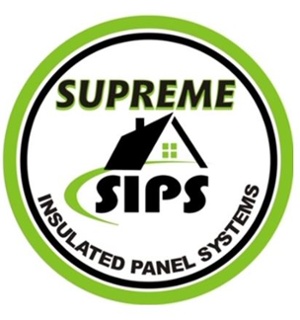Supreme Insulated Panel Systems
Supreme supplies panels to Builders, Architects, Contractors, Green Building companies, and green-conscious consumers
Not all Magnesium Oxide panels are created equal. Supreme SIPs have some important unique features including:
- NTA Certified
- Qualified in LEED (Leadership in Energy & Environmental Design) Certification
- Green Building Certification Available
- Meets or exceeds the 2020 Building Code

FAQs for Structural Insulated Panels
What are structural insulated panels (SIPs)?
Structural insulated panels (SIPs) are high performance building panels used in floors, walls, and roofs for residential and light commercial buildings. The panels are typically made by sandwiching a core of rigid EPS foam insulation between two structural skins of oriented strand board (OSB). We at Supreme Insulated Panel Systems use MGO boards instead that are far better for the tropical climate and increase the impact resistance and are termite proof. Other skin material can be used for specific purposes. SIPs are manufactured under factory controlled conditions and can be custom designed for each home. The result is a building system that is extremely strong, energy efficient and cost effective. Building with SIPs will save you time, money, and labor.
Where can I learn more about SIPs?
Visit Supremesips.com to find excellent SIP information. Also, go to the Structural Insulated Panel Association (SIPA), and browse the publications on the SIPA Online Store. Building with Structural Insulated Panels, by Michael Morley, and the Builder’s Guide to Structural Insulated Panels (SIPs), by Joe Lstiburek, are two popular books that contain a wealth of information.
How much money can I save with SIPs?
Builders can save money through decreased construction and labor costs. The superior whole wall R-values and building tightness capable with SIPs allow HVAC equipment to be downsized and ductwork to be minimized. Builders can also significantly reduce job site waste disposal and temporary heat during construction. Homeowners that incorporate other energy efficient features with SIP construction can benefit from the energy efficiency of a SIP home with reductions in heating and cooling costs of 50 percent or more, possible qualification for Energy Efficient Mortgages, and higher appraised value.
How much labor can I save with SIPs?
How much do SIPs cost?
Pricing information can be obtained by contacting any of SIPA’s Manufacturer or Dealer/Distributor members. However, the material price does not reflect the labor savings capable with SIP construction. A study conducted by the R.S. Means unit of Reed Construction Data shows that building with SIPs can reduce framing labor needs by as much as 55 percent over conventional wood framing. Builders can also expect decreased job site waste disposal costs and savings on HVAC equipment. Energy-efficient SIP buildings demand a higher market price because of the utility savings they offer to home buyers. When all these factors are considered, building with SIPs is often less expensive than other building systems.
How green are SIPs?
Extremely! It's all about energy efficiency. Structural insulated panels are one of the most environmentally responsible building systems available. A SIPs building envelope provides high levels of insulation and extremely airtight, meaning the amount of energy used to heat and cool a home can be cut by up to 50 percent. The energy that powers homes and commercial buildings is responsible for a large portion of greenhouse gasses emitted into the atmosphere. By reducing the amount of energy used in buildings, architects, builders, and homeowners can contribute to a clean environment for the future.
Are SIPs eco-friendly?
The insulation used in SIPs is a lightweight rigid foam plastic composed of 98% air, and requires only a small amount of petroleum to produce. The foam insulation used in panel cores is made using a non-CFC blowing agent that does not threaten the earth’s ozone layer.
How does the structural insulated panel design and fabrication process work?
The construction of a SIP home or commercial building begins with the construction documents. Once the construction documents are in the hands of an Extreme professional, they are converted to SIP shop drawings that give the dimensions of each individual panel. The shop drawings are reviewed by the builder, engineer, the building owner, and other involved parties. Once the shop drawings are finalized, the SIPs are fabricated and shipped to the job site for installation.
What is the R-value of SIPs?
R-values for SIPs depend on the thickness of the SIP and the type of core material that is used. Static R-values, rate the effectiveness of insulating material. However, they do not accurately describe how products perform in a real world setting. When fiberglass or other types of insulation are installed, they are installed around structural members made of wood or metal which have a very poor insulating value. Field installed insulation materials are also prone to installation imperfections. The Department of Energy’s Oak Ridge National Laboratory has studied and tested the performance of entire wall assemblies in large sections. The resulting whole-wall R-value data reveals that a 4.5” SIP wall rated at R14 outperformed a 2”x6” wall with R-19 fiberglass insulation.